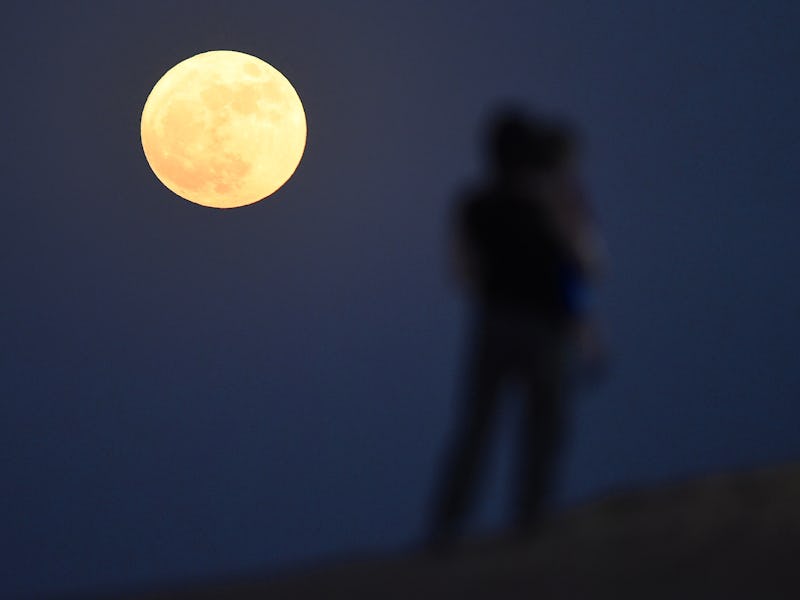The First Supermoon of 2018 Has An Extra Surprise in Store

Earth’s best friend, the moon, will be joining in on the New Year’s celebrations this year with a little surprise — a supermoon on January 1 through January 2.
The first full moon of the year happens to be a supermoon, which means the moon will appear somewhat bigger and brighter than other full moons. For stargazers — intoxicated or not — the moon will look like a big ol’ disco ball to ring in the New Year.
Here’s how it works: the moon’s orbit around Earth is elliptical, right? The point at which the moon is farthest away from Earth in its orbit is called the apogee, and the point where it’s closest to Earth is called the perigee. A supermoon occurs when the moon is closest to — or at — its perigee. That’s why it looks just a tad more special.
This January will bring about two full moons, both of which just so happen to be supermoons. But the full moon on January 1 is extra interesting, because it comes just 4.5 hours after the moon reaches perigee. Therefore, it’ll be the biggest and brightest moon of the year.
Hurray for wholesome celestial happenings!
A 'supermoon' is pictured rising over the desert in Dubai on November 14, 2016 in Dubai, United Arab Emirates.
The full moon in January is typically called the “Wolf Moon,” which goes back to the Old Farmer’s Almanac. “It appeared when wolves howled in hunger outside the villages,” the legend goes, according to the Almanac.
If you look at their website, clearly, their hype for the full moon has not dwindled over the years.
All things considered, this first January supermoon is really a warm up for the second, which occurs on January 31.
“Some people will call the next full moon on January 31 a Blue Moon because it’s the second of two full moons to occur in one calendar month,” EarthSky reports. “Moreover, this second supermoon of January 2018 will stage a total eclipse of the moon.”
With so many fun things happening in the night sky this January, hopefully that’s a good sign of things to come in 2018. Just kidding, that’s not how science works.